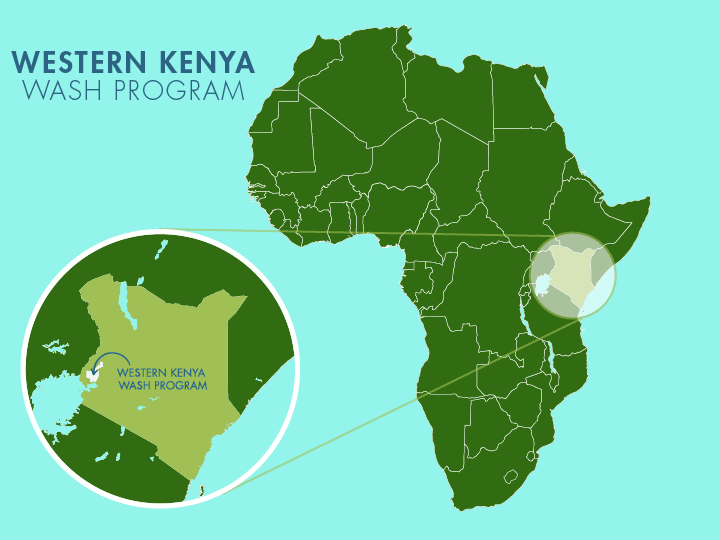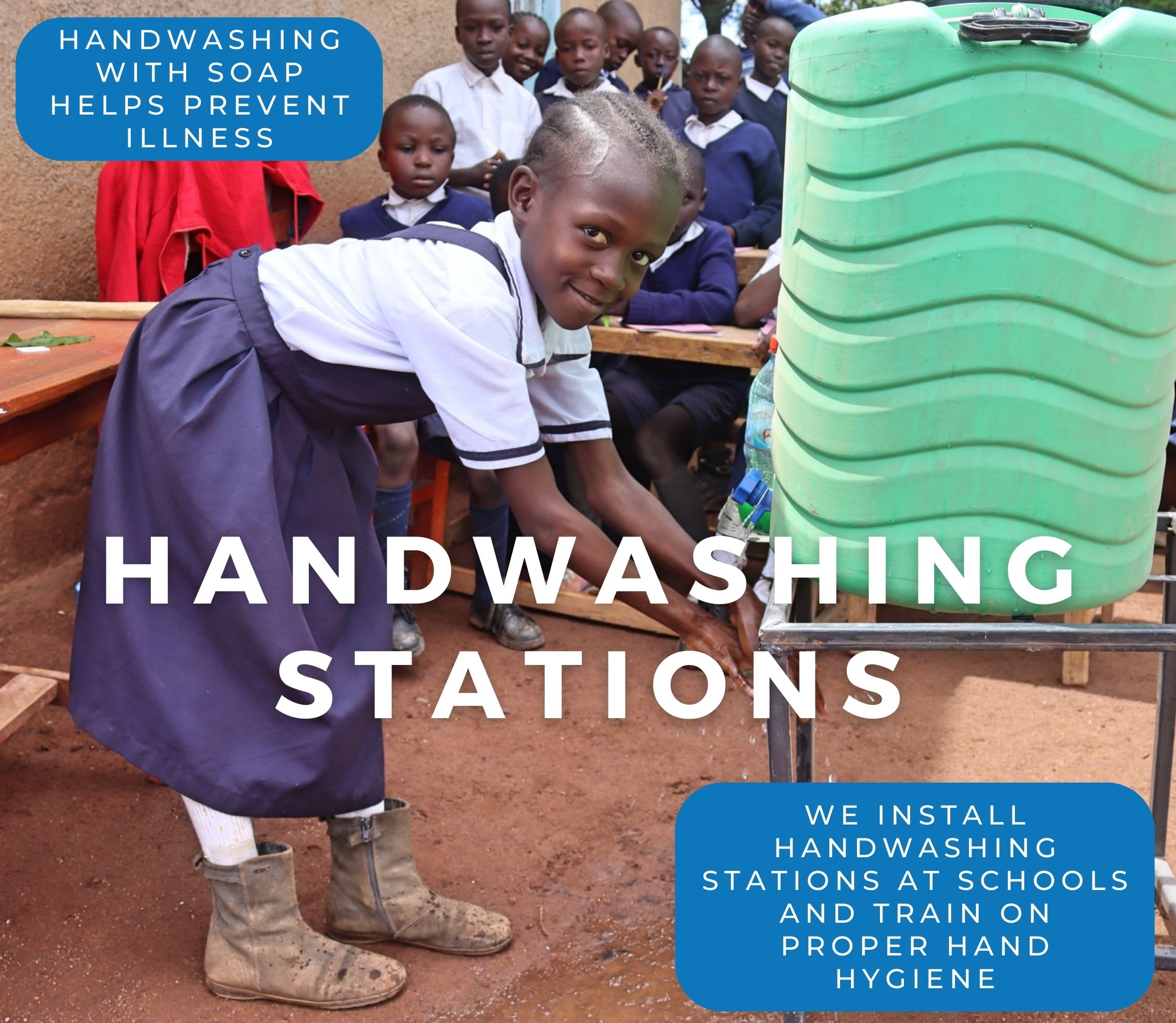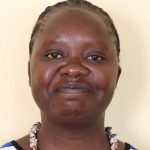Kakamega High School has a massive population of 2,318 students and 104 staff members. Over the decades, it has produced generations of top students and athletes, becoming especially well known for excellence in soccer and rugby. Yet behind this reputation lies a persistent challenge that touches every student’s day — the struggle to access clean and sufficient water.
The school relies on a single borehole that can no longer meet the needs of its growing population. Students, teachers, and staff all depend on the same source, which is often overcrowded and sometimes runs low or even dry.

Hauling water at school.
Field Officer Patience Wanyoni observed, “Due to the high population of the school, the current water source is not sufficient. Therefore, our proposed water solution will help complement the already available source to make the water sufficient for the students.”
The water itself shows clear signs of strain. “It had white particles in it that caused build-up in surfaces with a little bit of a metallic taste, but it had no odor at all,” Patience said. The area around the borehole is also a concern. “The water point area is not kept clean because this is where the students fetch their water from, they wash their clothes from there too, and do their cleaning there too. So, the level of cleanliness is very wanting.”
The crowded conditions often lead to tension.
“During school hours, it is usually a struggle to get the water from the water point due to congestion,” Patience explained. “More often than not, this usually leads to a lot of struggling, quarreling, and even sometimes breaks out in fights. This is because everyone wants to get water and not be late for the lessons, yet this can only be achieved if people do it one at a time," Patience continued.
On average, a student spends 20 minutes collecting water; however, at busy times, it can take an hour or more.
For Javelin, a 16-year-old student at the school, this daily challenge is deeply personal.

“The queue at the waterpoint and the overcrowding cause me to spend a lot of time waiting so as to be able to get water for my personal use,” he said.
“Sometimes I [am] late for the lessons because I was in line fetching water. This makes me [miss] some things, and sometimes getting them to be repeated by a teacher is hard, and reading them from a book might be difficult to understand because it is generally a hard concept. So, when the concept is examined, I end up doing poorly in it," said Javelin.

But it’s not just about lost time. Javelin has also suffered physically because of unsafe water.
“The experience was very painful. I was in pain for a couple of days, and I had to be released from school so as to go and seek medical attention [at] home. I got home and I was treated for typhoid. The abdominal discomfort, diarrhea, and vomiting were such a bad experience," he recalled.
Even after recovering, Javelin continues to face challenges at the waterpoint.
“Very many times I have gone to the waterpoint and I have been bullied. A student would come and insult me or even push my bucket inside and put theirs instead," he bravely shared. “There are times older students come in line and push the younger student at the back of the line so they can be the first to get water.”
When asked about how the shortage of water makes him feel, his answer is sincere and straightforward: “High population and overuse cause the water to not be enough. This usually makes me feel very sad. I wish there were a way [that] this problem could be solved once and for all to avoid the challenges that come with it.”
Despite his challenges, he remains optimistic.
“I would, first of all, engage more time being better in my classwork. I have not been doing so well [in] some subjects, and getting more time would help me focus more on them. Also, I enjoy participating in debates and public speaking. I hope to sharpen my skills so as to be a good public speaker in [the] future," he said.
“I am very hopeful about my future. I am working hard so as to become a lawyer in [the] future. I hope to bring solutions and speak up for the people who cannot speak for themselves," Javelin boasted.

Class in session.
Field Officer Patience Wanyoni believes a new waterpoint could transform the school’s daily life.
“Our water solution will help complement the already available source to make the water sufficient for the students,” she said.
For students like Javelin, that means far more than convenience. Reliable, clean water would bring relief from illness, safety from bullying and crowding, and time to study, rest, and dream of a brighter future.
Steps Toward a Solution
Schools without reliable, on-premises water access often rely on students to fetch and carry water, leading to rationing and uncertainty about water quality. The water is typically poured into a communal storage tank and used by the entire school. With children carrying water from all different sources, it is also impossible for teachers and staff to know exactly where the water comes from and how safe it is to drink.
A new water point will be located on-premises at the school to ensure accessibility, reliability, and safety for students, teachers, and staff while meeting our school coverage goals. Having water available at the school allows children to drink, wash hands, and use sanitation facilities without leaving school grounds, preventing disruptions to lessons and reducing safety risks. A dedicated source increases water availability, reduces reliance on stored water, minimizes rationing, and ensures confidence in the safety of the water. This means staff and students are healthier, and their lessons aren’t disrupted, contributing to a better education!
Our technical experts worked with the school leadership and local community to identify the most effective solution to their water crisis. They decided to drill a borehole well, construct a platform for the well, and attach a hand pump.
Well
Abundant water often lies just beneath our feet. Aquifers—natural underground rivers—flow through layers of sediment and rock, offering a constant supply of safe water. A borehole well is drilled deep into the earth to access this naturally filtered and protected water. We penetrate meters, sometimes even hundreds of meters, of soil, silt, rock, and more to reach the water underground. Once found, we construct a platform for the well and attach a hand pump. The community gains a safe, enclosed water source capable of providing approximately five gallons of water per minute. Learn more
Our proposed water point can only serve 300 people per day. We hope to continue working to identify other water solutions that will ensure all the people in this community have access to safe and reliable drinking water.
Handwashing Stations
Alongside each water source, we install two gravity-fed handwashing stations, enabling everyone at the school to wash their hands. Handwashing is crucial for preventing water-related illnesses within the school and community. Student “health clubs” maintain the stations, fill them with water, and supply them with soap, which we often teach them how to make.
Latrines
We will construct two Ventilated Improved Pit (VIP) latrine blocks designed to prevent fecal disease transmission. Each latrine features a cement floor, making it easy to use and clean regularly. Three stalls will serve the girls, and three will serve the boys.
School Education & Ownership
Hygiene and sanitation training are integral to our water projects. Training is tailored to each school's specific needs and includes key topics such as proper water handling, improved hygiene practices, disease transmission prevention, and care of the new water point.
To ensure a lasting impact, we support forming a student health club composed of elected student representatives and a teacher. These clubs promote hygiene practices schoolwide and keep handwashing stations well-stocked. This student-led model encourages a sense of ownership and responsibility.
Safe water and improved hygiene habits foster a healthier future for everyone in the school and the surrounding community.

 Borehole Well and Hand Pump
Borehole Well and Hand Pump
 Rehabilitation Project
Rehabilitation Project




















